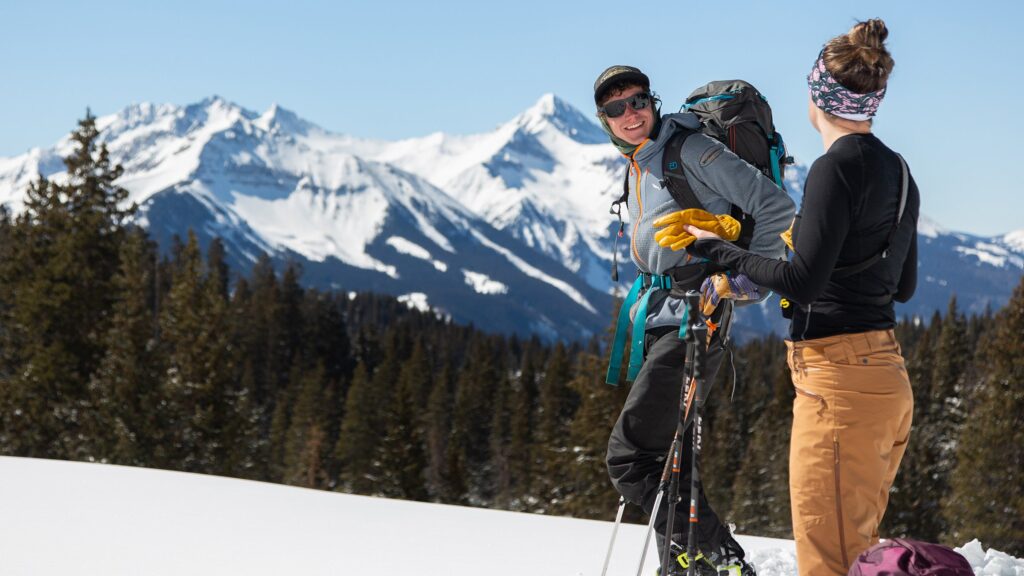Published October 23, 2025 01:55PM
A modern fleece is essentially a better sweater. It’s lighter and quicker-drying for backcountry travel, but fundamentally does the same job as those fishermen’s cable knit tops of yore: it keeps you warm, even when you’re damp, and breathes well enough to keep you from swamping out.
And the best men’s fleece jackets today are diverse: We tested thicker fleeces for colder temps, breathable fleeces for high-intensity exercise, and even wool-based fleeces for their odor-resistance and comfort. Our crew put these midlayers through the wringer while skiing, running, cycling, and climbing, wearing them with waterproof shells and without. Of the 62 fleeces in our testing pool, only six stood out as the ultimate winter midlayers.
Best Men’s Fleece Jackets: At a Glance
Best Men’s Fleece Jacket Overall
Houdini Power Houdi
Size Range: XS-XXL
Weight: 16.8 oz
Pros and Cons
+ Very stretchy
+ Very soft
+ Exceptional durability
– Expensive
– Snug fit
The Power Houdi earned its way up to our top spot by excelling in nearly every metric we look for in a fleece: It’s extremely durable, warm, and comfortable. If you’re looking for a long-lasting, versatile fleece with serious technical chops, it’s hard to go wrong with this hoodie.
Performance-wise, the Houdi’s longstanding popularity is entirely due to Houdini’s fabric choice: Polartec’s Power Stretch Pro. The thick polyester weave provides exceptional warmth and is guarded with a smooth, abrasion-resistant nylon face that, in our testing, withstood year-round abuse like shouldered skis on Jackson Hole’s notorious White Spider bootpack and climbs on Boulder, Colorado’s slabby sandstone Flatirons. Along with its best-in-class durability, the fabric’s four-way stretch felt great as we moved and kept the Power Houdi from losing its shape over two years of testing. That elasticity—combined with the buttery-soft brushed interior—imparted an “instant coziness,” according to one tester.
With its tight weave, the Power Houdi is the least breathable of the fleeces on our list. In our bootpacking tests, we tended to reach for it exclusively when temps dipped into the teens or single digits. Still, if we did build up a head of steam, the brushed interior wicked well, and overall breathability was still better than an active-insulation midlayer.
Our Flatirons scrambler also loved the Houdi’s two-way zipper, which allowed him to more easily access his climbing harness, as well as the sturdy thumb loops that kept the sleeves pulled down and his hands warm, even while clinging to cold rock. Adding to the warmth, the scuba hood is so thick and snug that we’d often leave our beanie at home. Our only qualms with this jacket? The narrow Euro-fit may be too snug for some, and on less frigid days, it may simply be too warm for aerobic adventures.
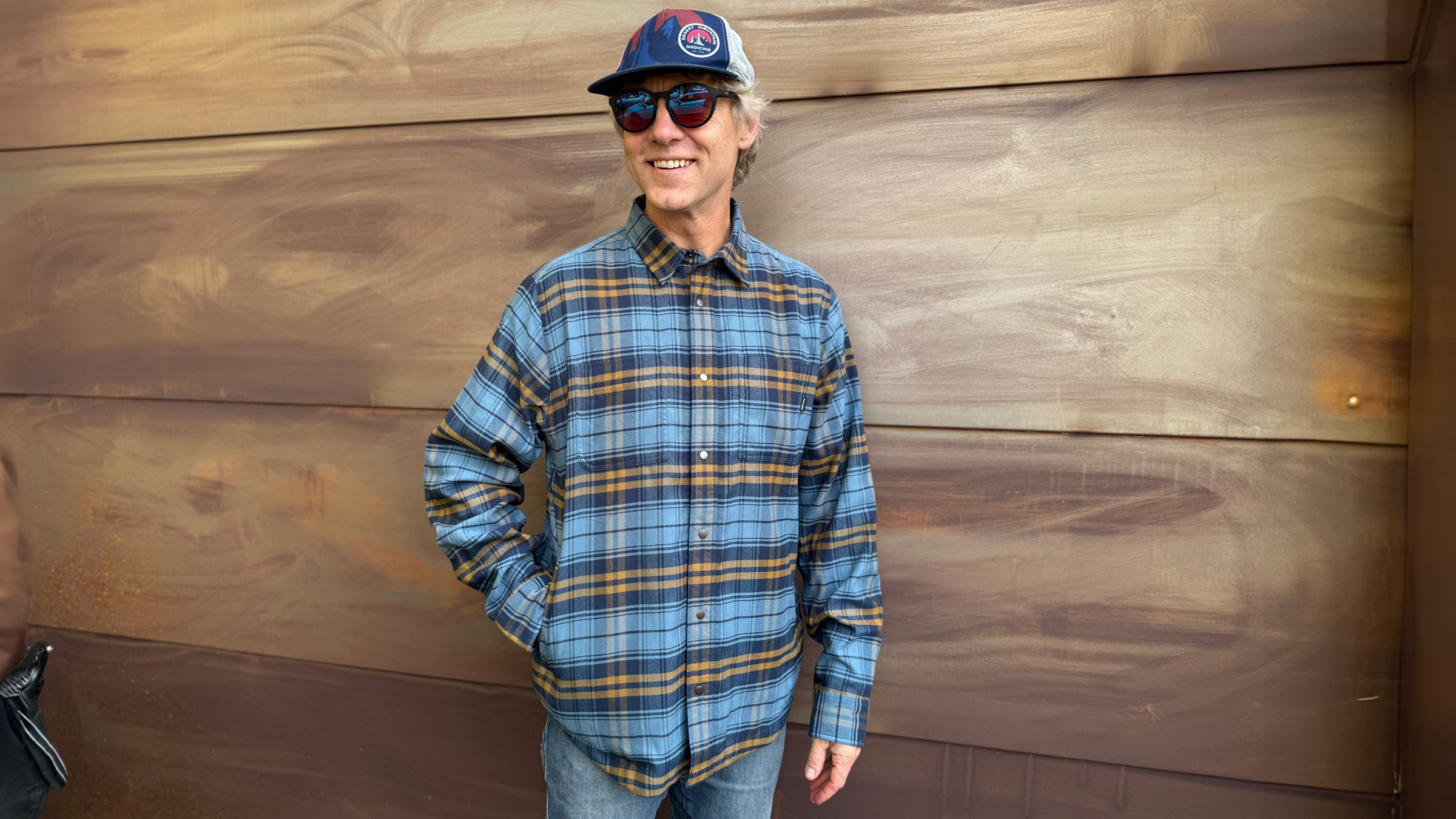
Best for Spring Skiing
Flylow Lassen Fleece Lined Flannel
Size Range: S-XXL
Weight: 1.4 lbs
Pros and Cons
+ Street/slope crossover appeal
+ Good wind protection
– Heavy
– No recycled materials
Flannel button-downs never go out of style—especially in ski country. If rocking a crinkly nylon shell at après or on the fat bike isn’t your jam, the Lassen Fleece Lined Flannel might be. Despite the street style, Flylow clearly designed this shirt with outdoor rigors in mind. Along with a soft fleece lining, a zippered interior pocket can secure your RFID ski pass, car keys, or other valuables while the snug collar snaps extra high to seal in heat. The interior sleeves are lined with a slippery taffeta to ensure frictionless pole plants on the uphill skin track. With its double-layered polyester and nylon construction, the Lassen is the least breathable layer on the list, but provided our testers with enough wind protection to wear as an outer layer for sunny spring ski conditions, and garnered a few approving nods on the lodge deck afterward.
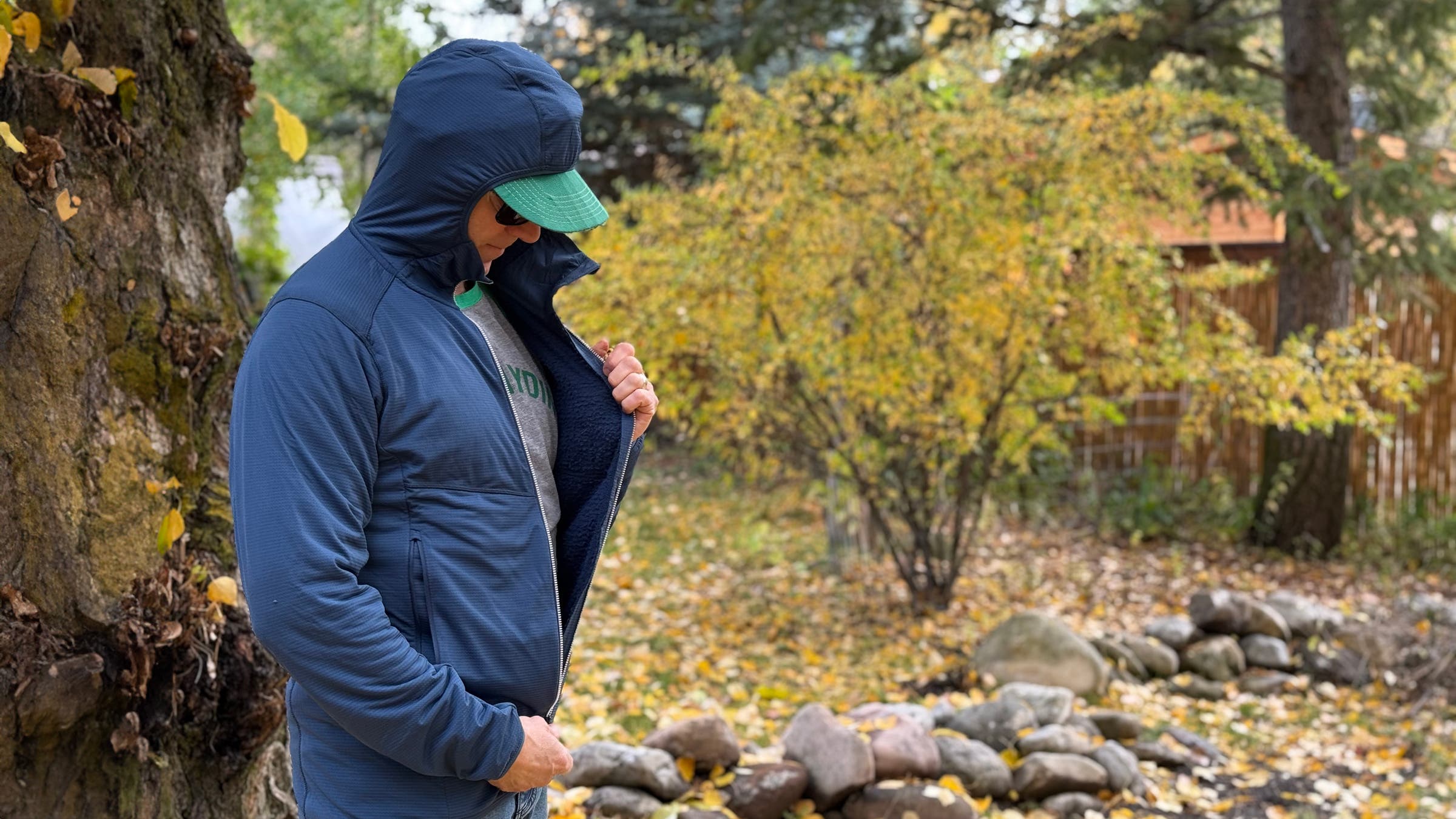
Best for High-Intensity Exercise
Rab Evolute Hoody
Weight: 12 oz
Size Range: S-XXL
Pros and Cons
+ Exceptional warmth-to-weight ratio
+ Quick-drying
+ Recycled materials
+ Odor-fighting treatment
– Runs small
The Evolute pulls off a pretty impressive trick: it was one of the most breathable fleeces we tested this season while also offering some of the best weather protection. The secret lies in Rab’s use of Primaloft Active Evolve fleece, a fabric made of silky, polyester fibers woven to a mesh chassis, leaving lots of space between them. That loft means Active Evolve insulates quite well, and it also provides excellent ventilation when things get steamy. It’s paired with a light and airy woven polyester face fabric with an equally impressive breathability factor. With that combo of superlight fabrics, we expected the Evolute to be delicate and prone to tears, but in two years of testing, it hasn’t so much as popped a stitch.
In addition to the lightweight fabrics, the Evolute cuts weight by staying light on features, with elastic cuffs and hem (rather than a draw cord) and just one pair of zippered hand pockets. The hood fits snugly and works well under a helmet.
The Evolute became an everyday layer for our New Hampshire-based winter trail runner, who used it comfortably in conditions down to the teens. “It was crazy warm, but I never felt clammy no matter how hard I went,” he said.
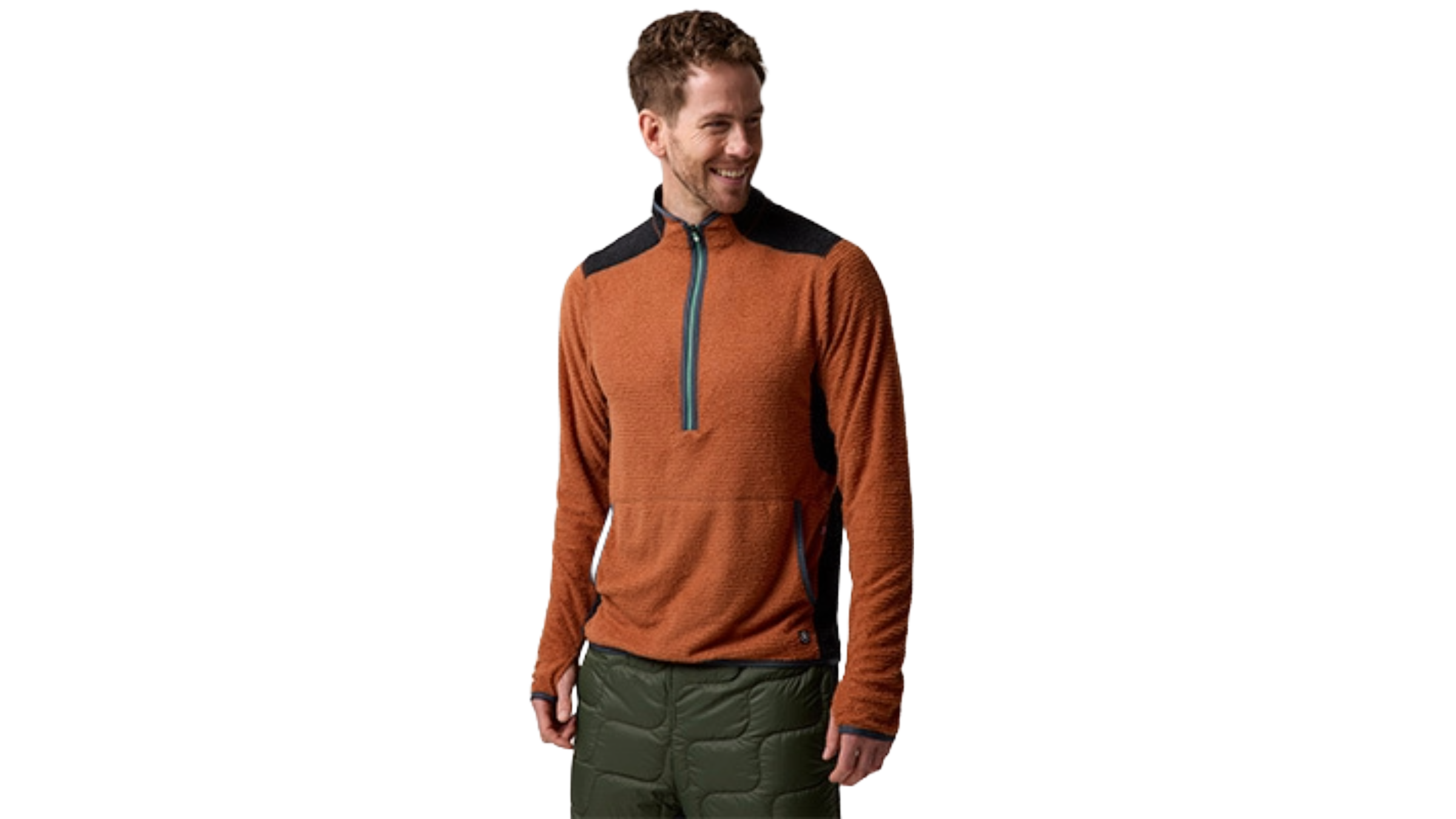
Paid Advertisement by Backcountry
Highliner PrimaLoft Air-Perm Fleece 1/4-Zip
Looking for the perfect grab-and-go fleece for any adventure? Meet the Highliner PrimaLoft Air-Perm Fleece 1/4-Zip from Backcountry. Lightweight, warm, and breathable, it’s ideal for everything from summit pushes to casual hikes. This 1/4-zip midlayer is built for high-performance without overheating on the move—yet it’s soft and cozy enough to lounge in after the day’s done. Made from 100% recycled polyester, it keeps you warm while treading lighter on the planet. Bonus: it packs down into its own hidden pocket for easy stashing in your backpack or carry-on, making it ready for wherever your adventures take you.
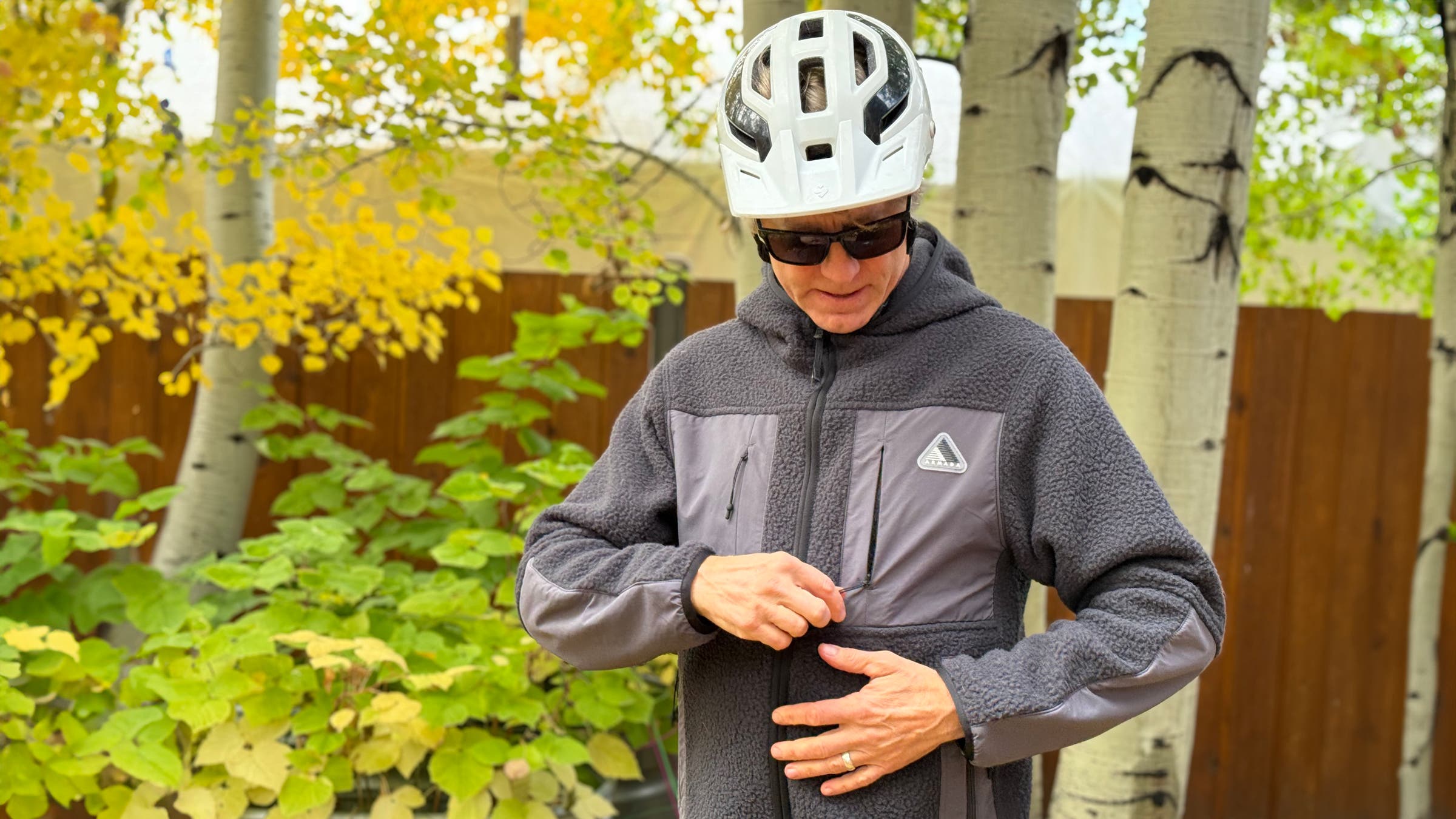
Warmest Fleece Jacket
Armada Furtherance Fleece
Weight: 1.4 lbs
Size Range: XS-XL
Pros and Cons
+ Exceptionally warm
+ Abrasion- and weather-resistant patches
+ Recycled material
+ Roomy fit
– Bulky hood
– Hem isn’t cinchable
When you want a ton of breathable warmth, like while racing Jackson Hole locals to their powder stashes on a stormy day, not much beats high-pile fleece. Our favorite fluffy fleece in test was Armada’s Furtherance, which proved itself to be both a very warm layer and ideal under a shell for hard-charging alpine ski days when breathability is paramount.
The Furtherance’s 100 percent recycled polyester fabric was thick enough to handle the typically damp cold of the French Alps and pull double-duty as a lofty pillow on the flight home. It has nylon panels in high-wear areas like the forearms, chest pockets, and hand pockets, and a burly zipper that will last multiple seasons. The cut was generous enough for bigger bodies and dynamic skiing. Our main quibbles? The oversized hood, which felt cumbersome under a shell, and the inability to tighten the bottom hem, which made for some extra bulk around the hips.
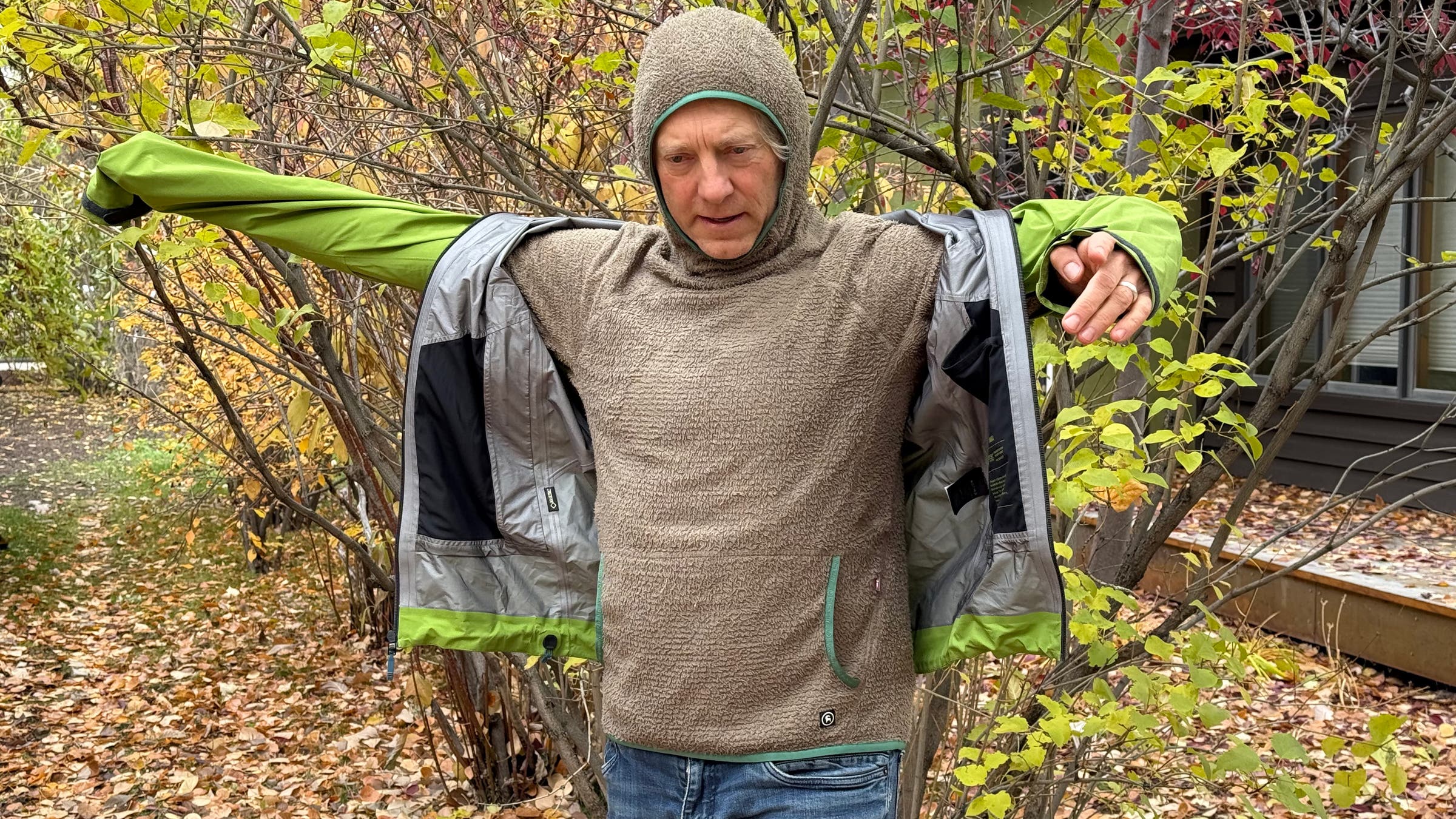
Most Packable
Backcountry Highliner PrimaLoft Air-Perm Fleece Hoodie
Size range: S-XXL
Weight: 6.6 oz
Pros and Cons
+ Affordable
+ Very breathable
+ Super light
– Not wind-resistant
– Itchy stow pocket
Primaloft’s Active Evolve is one of the warmest, most breathable fabrics for its weight, full stop. While you’ll see ultralighters touting gossamer-thin shell-less Alpha Direct fleeces (from Primaloft competitor Polartec) on thru-hikes, Backcountry is the only company that has dared to use Primaloft’s most delicate fabric as a standalone layer. “It’s like wearing a thermal fishing net,” joked one tester.
When we paired it with a windblocking shell and our typical thermal baselayer during a trip to British Columbia’s Monashees, we were comfortable in temps down to the 20s, stunningly warm for a 6.6-ounce garment. And the breathability of this hoody on high-output, windless days is nearly unparalleled. Contributing to its light weight and packability, the feature-set is paired down, with no zippers and just a minimalist kangaroo pocket to stash a pocket knife or energy bar.
The obvious downside to a layer cut solely from Active Evolve fabric is durability. We avoided wearing it directly beneath pack straps and after roughly 40 uses, we didn’t notice any wear. Luckily, if it does fail after a few years, the modest price point makes it an easier pill to swallow.
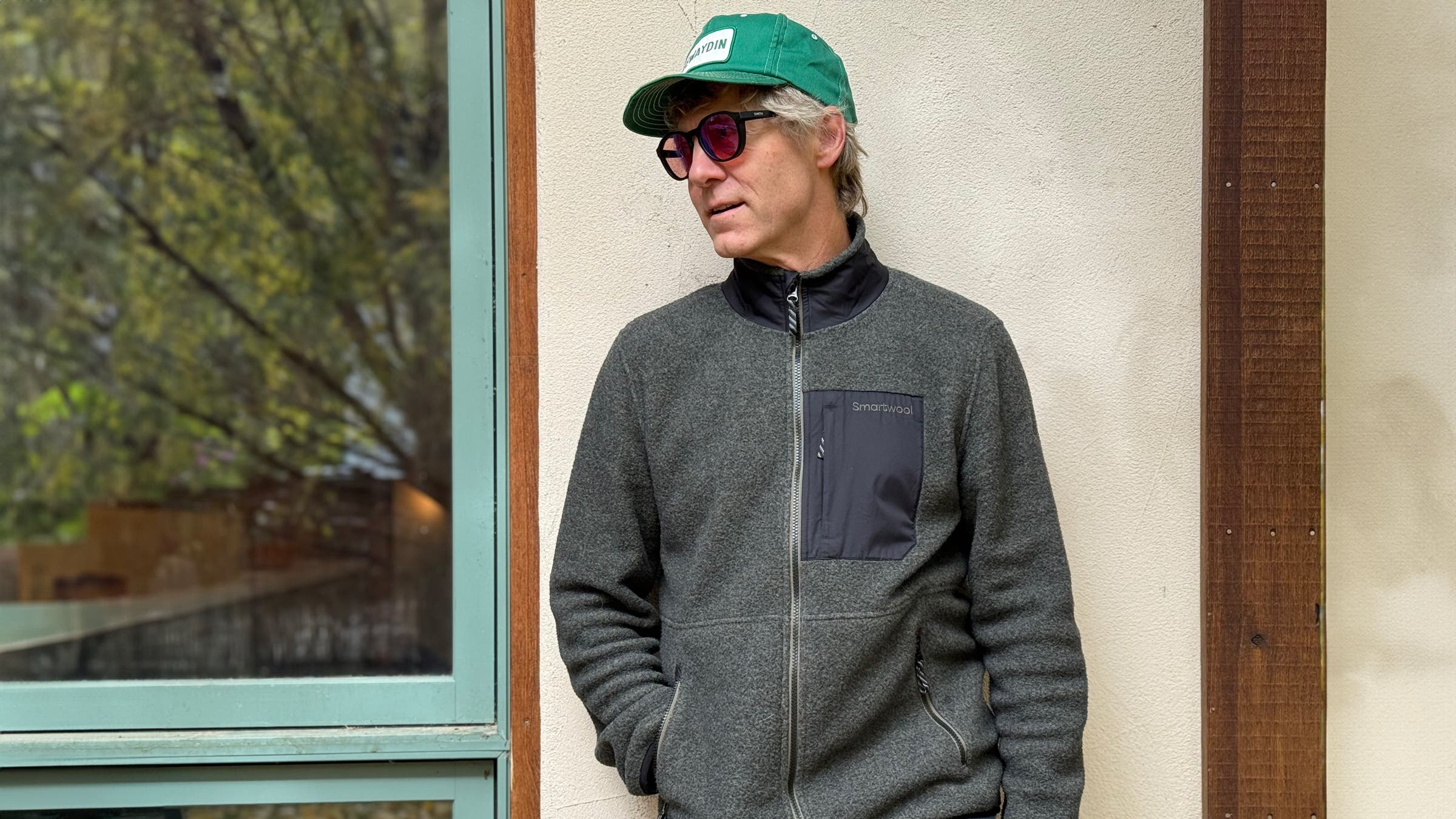
Most Versatile
Smartwool Second Cut Fleece Jacket
Weight: 24.4 oz
Size Range: S-XXL
Pros and Cons
+ Very soft
+ Slim fit for layering
+ Cut from upcycled materials
– No hood
How do you make fleece more environmentally-friendly than simply using recycled plastic bottles in its construction? For Smartwool, the answer was combining recycled polyester with the Merino wool scraps left over from making the brand’s coveted base layers. The end result, the Second Cut Fleece Jacket, is as soft, stretchy, and—nearly—as breathable as any fleece in our test, with a smaller environmental footprint.
This jacket is a classic medium-weight fleece, and with a slim fit, it was perfect for versatile layering. In fact, one tester absconded with it on a months-long European ski tour. “It’s the perfect traveling layer,” he said, noting that Merino wool’s natural odor-fighting properties come in handy when it’s hard to get laundry done. There’s no hood, but we didn’t miss it when paired with a ski jacket. We loved the details: An elasticized hem to help seal in warmth, a trio of zippered pockets, and top-shelf, sturdy zippers.
How to Choose the Best Fleece Jacket
The best fleece jackets for men range in warmth, breathability, and weather protection. Here’s how to know which fleece will serve your needs best.
Will You Pack It?
As a rule, traditional fleece isn’t as compressible or light as, say, goose down. So it takes up considerable space in luggage and backpacks. If you need a fleece on a weight- or pack size-sensitive backcountry mission, check out ultralight fleeces, like the Backcountry Highliner PrimaLoft Air-Perm Fleece Hoodie.
How Much Will You Sweat?
Some fleeces use a dense construction that traps in body heat but limits breathability. If you’re cross-country skiing, running, or logging outdoor workouts that involve constant exertion, look for lightweight fleeces or hybrid constructions that place breathable, less-insulated panels under the arms and in other hot spots. While all of these fleeces offered great breathability, Rab’s Evolute Hoody was a bit of a unicorn, offering exceptional breathability for high aerobic output with a decent dose of wind resistance.
Will You Wear a Shell?
While fleece will keep you warm, even when damp, it offers minimal water resistance. And most fleeces are also porous enough to let breezes in, which is great for sweat-mitigation, but bad for comfort in 30-mph winds. The answer in all but the most fairweather cases? A wind- or waterproof shell. For ski-touring, throwing on a hardshell for the downhills will give you protection without zapping the breathability of your fleece. For less serious protection, a breathable windshell or softshell might be the ticket. And if the weather is in your favor? A fleece with some weather-resistant panels, like Armada’s Furtherance Fleece, might be all you require.
How We Test Fleece Jackets
- Number of testers: 13
- Number of products tested: 62
- Number of Mountain Ranges Represented: 19 (Absaroka, Alaska Range, Andes, Bitterroots, Chugach, French Alps, Front Range, Gore, Greens, Monashees, Mosquito, Park, Teton, Sawatch, Selkirks, Smoky Mountains, South San Juans, Wasatch, Whites)
- Highest Windspeed: 90 mph in the Andes
Coincidentally, most of our fleece testers turned out to be teachers—our ideal evaluators. For one thing, their need to get out skiing, running, cycling, and climbing was uncompromising, if only to shake off the stress of modern education. That meant that they went out no matter the conditions, pushing these garments to their limits. For another thing, they are used to giving critical feedback. Grading the fit of a hood or a fabric’s odor-fighting properties was a welcome change from skewering another middling essay on Moby Dick.
For this test, we put as many fleece models as we could get our hands on through the rigors of skiing, ice climbing, running, and snow biking in cold and uncomfortably wet conditions on three continents. Of the 62 we evaluated, we wore full-zip models and pullovers, wool and petroleum-based. Our testers graded warmth, breathability, fit, durability, sustainability, and price. Their verdicts led us to select only the best of the batch.
Meet Our Lead Tester
Frederick Reimers was raised at a canoe-tripping summer camp in Ontario, Canada and had completed a trio of 40-day expeditions before he even shipped off to college. When his parents sold the camp and moved to Jackson Hole in the 1990s, he followed. He has made a career of scribbling about outdoor culture and gear ever since. In addition to Outside, his work has appeared in The New York Times, Smithsonian, Bloomberg Business, and SKI. While Wyoming’s long winters do feel a little drawn-out come April, that makes it the perfect place to test layers. Find Reimers testing them on ski slopes, Nordic tracks, and bitterly cold predawn dog walks around town.


